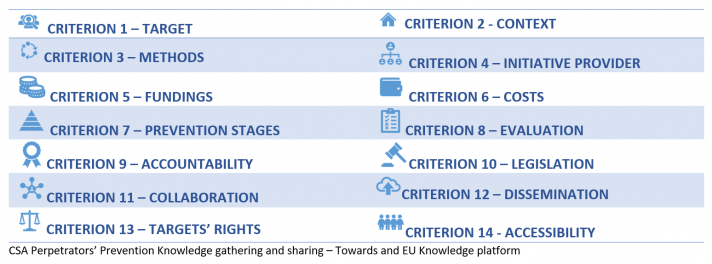
Today, the European Commission published a proposal to update the Legislation to effectively tackle Child Sexual Abuse, introducing new measures. The legislation puts a strong emphasis on prevention, requesting Member States to invest in programmes aimed at people who fear they may offend, those undergoing criminal proceedings or who are serving a prison sentence for related crimes, and previous offenders coming out of prison.
Having sexual desires towards children is not a crime; however, acting on them is. Providing prevention programmes for those susceptible to act on such impulses is of utmost importance to reduce the number of victims.
Although preventing and combatting child sexual abuse is a priority of the European Union, coming up with a common EU-wide approach has been hindered by the lack of a concrete framework to categorise what Member States already accomplish. A plethora of different terminologies and taxonomies exist to describe prevention programmes, making the information about such initiatives limited, unclear, and unstructured.
To address this issue, the JRC published a report that can act as a reference for categorising prevention programmes. It proposes 14 classification criteria and related keywords to describe such programmes, ranging from naming the targeted groups to an appraisal of how accessible the initiatives are (see below).
The classification criteria were developed in collaboration with the Network on Prevention of Child Sexual Abuse and other professionals in the field. The criteria represent the first steps towards an EU knowledge platform, which will support EU Member States in designing and implementing prevention programmes tailor-made according to their respective cultural and societal environments. These criteria will be useful for cataloguing the prevention programmes gathered in a previous JRC report, which is currently being updated and will be published soon.
The created taxonomy will also support Member States and other stakeholders (such as prevention networks, researchers, NGOs, probation officers, prison psychologists, etc.) experiencing difficulties in implementing prevention programmes, by facilitating the development of a source of structured and reliable information. It will support the dissemination of research-based prevention work in different countries, facilitate the exchange of promising practices and enhance the sharing of knowledge strengthening the EU’s capacity to decrease child sexual abuse.
The new proposal for regulation
The EU legislation presented today aims to protect children against sexual abuse, online and offline. The new rules will strengthen the support for prevention measures and for victims.
In the absence of harmonised rules at EU level, providers of social media platforms, gaming services, and other hosting and online service providers, face divergent rules. Certain providers already use technologies voluntarily to detect, report and remove child sexual abuse material on their services. However, the measures vary widely and voluntary action has proven insufficient to address the issue. Consequently, Member States have started preparing and adopting national rules to fight against child sexual abuse. These divergent national requirements lead to an increasingly fragmented response.
This proposal seeks to establish a clear and harmonised legal framework. It provides legal certainty to providers regarding their responsibilities to assess and mitigate risks and, where necessary, to detect, report and remove online child sexual abuse on their services with due respect for fundamental rights of all users, including the right to privacy and data protection.
The Commission is also proposing to establish a European Centre to prevent and counter child sexual abuse. The EU Centre will facilitate and support implementation of this regulation and will contribute to preventative activities and victim support.
Sources
Details
- Publication date
- 11 May 2022
- Author
- Joint Research Centre

